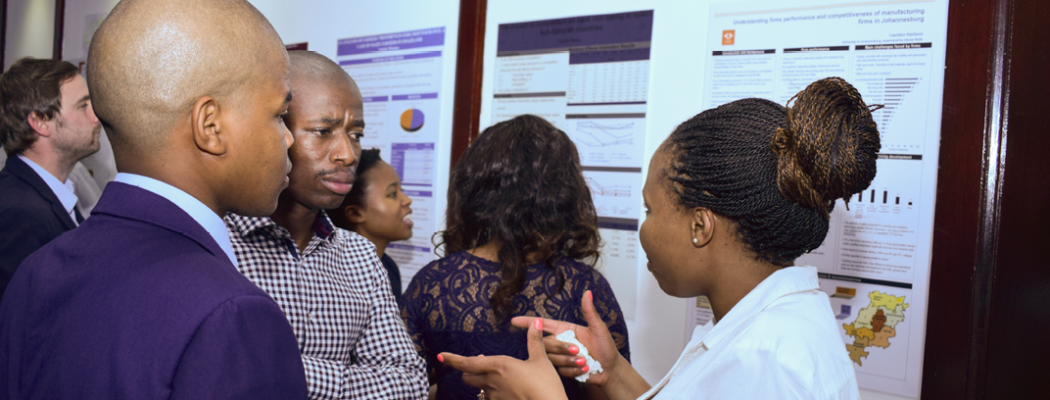A just transition to cleaner energy in South Africa
The global energy system is shifting to cleaner technologies in a bid to reduce greenhouse gas emissions. As part of its climate commitments, South Africa has also pledged to cut emissions. As the power sector is the largest domestic emitter, a shift to cleaner energy is needed. Significant declines in renewable energy costs have made such an option desirable, despite the negative impacts on the already shrinking coal sector. Global demand for coal is declining and is expected to decrease significantly in the near future. While the shift away from coal is inevitable and necessary, policies must be put in place to mitigate the effects on coal-mining workers and communities and ensure a just energy transition.
There no longer exists a trade-off between economic development and power sector decarbonization in South Africa
In the long term, a shift away from coal and toward renewable energy in South Africa does not negatively affect economic development. Protecting the coal-mining sector does not save jobs
Removing constraints on renewable energy deployment leads to higher real GDP and increased net employment, despite a decline in coal production, as less power sector investment and a smaller electricity price increase is required
Decreased global and domestic demand for coal will lead to a decline in coal production and employment. A just transition plan is needed to protect workers and dependent communities
South Africa’s climate commitment
The Paris Agreement calls for a reduction in global emissions to reach a future with average temperature increases kept to well below 2 degrees Celsius. Domestic coal provides 91% of South Africa’s electricity and is the largest contributor to emissions in the country. Decarbonization of the sector is necessary to reduce South Africa’s emissions and allow it to meet its Paris Agreement commitments.
Over the past decade, improvements in technologies and changes in fuel prices have lowered the cost of clean energy options, with significant cost declines in solar photovoltaic (PV) and wind technologies relative to others. Under a least-cost scenario, solar PV and wind will account for 30% of power generation by 2030 and at least 70% by 2050. This would enable a decrease in power sector emissions to less than 100 Mt by 2050.
The least-cost power pathway
There is no longer a trade-off between economic development and decarbonization of the power sector in South Africa. Because the least cost power pathway includes a significant share of renewable energy, a choice for any other technology would raise the cost of investment for power generation, and negatively affect the economy.
 South Africa’s Integrated Resource Plan (IRP) caps the inclusion of solar PV and wind technology whilst aiming to reduce energy sector emissions. Such a constraint lowers real GDP by nearly 6% and results in 3 three million fewer jobs as the rest of the economy bears the costs of more expensive low-carbon power generation technologies. These technologies raises power sector investment by 9.2% and electricity prices by 16% per kWh.
South Africa’s Integrated Resource Plan (IRP) caps the inclusion of solar PV and wind technology whilst aiming to reduce energy sector emissions. Such a constraint lowers real GDP by nearly 6% and results in 3 three million fewer jobs as the rest of the economy bears the costs of more expensive low-carbon power generation technologies. These technologies raises power sector investment by 9.2% and electricity prices by 16% per kWh.
The sector that primarily benefits from a constraint on renewable energy is coal-mining. Production costs for coal are rising and export demand is declining, however, putting the rentability of several coal mines at risk. In fact, the transition out of coal is already happening in South Africa and has been exacerbated by a recent period of severe economic shock due to the Covid-19 pandemic. Plans therefore need to be developed to support workers and communities to transition out of coal mining at scale.
Declining coal production
Under a detailed analysis of the least-cost energy path for South Africa (using the energy-economic model SATIMGE), demand for low quality coal in the power sector declines from 120 million tons (Mt) to 24 Mt by 2050. Accounting for declining external demand, coal-mining employment declines from ~78,000 in 2015 to ~30,000 in 2045.
 Minimizing negative impacts on coal communities
Minimizing negative impacts on coal communities
The benefits for South Africa in shifting away from coal outweigh the negative impacts. It is therefore imperative to develop policies that can minimize the impacts on vulnerable workers and communities. Support for retraining and reskilling workers, and for regional development initiatives, is required to mitigate the effects of mine closures.
For regions dependent on coal mining, such as Mpumalanga and to a lesser extent Limpopo, new economic development pathways must be developed to replace the coal-mining sector. These could include focusing on other mining sub-sectors such as platinum, cobalt, copper and nickel, demand for which has increased due to clean energy technologies; agriculture and agro-processing; and new industry that support green growth. Employment opportunities created need to be matched with concomitant incomes to protect coal-miners and communities that depend on their earnings.
A transition to renewable energy and away from coal should be done in a phased approach, to minimize the potential negative impacts during the transition
Communities, government, labour, and industry must collaborate to develop transition plans to reimagine South African industries for green growth, climate resilience, and social equity
Policy certainty must be provided through a commitment to transitioning the power sector. This will provide confidence for future investment and the development of new sectors
Further research is needed to assess the potential contribution, costs, and trade-offs of investing in alternative sectors, and the employment effects of various energy and industrial policy choices. Interventions that target both the creation of decent work opportunities for fossil-fuel workers and broader economic development activities for vulnerable regions are needed to ensure the success of a just transition.





